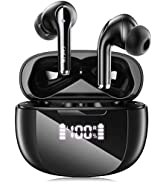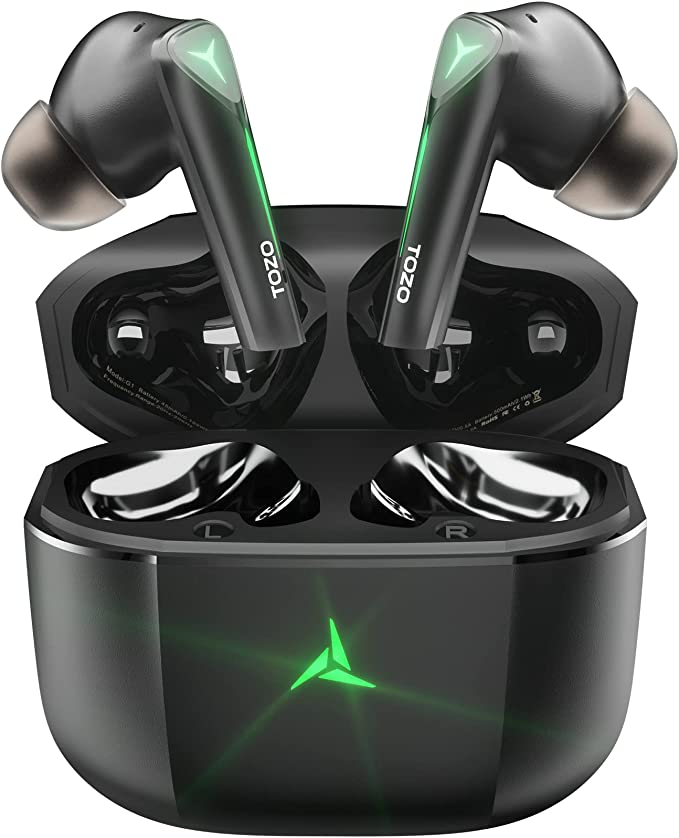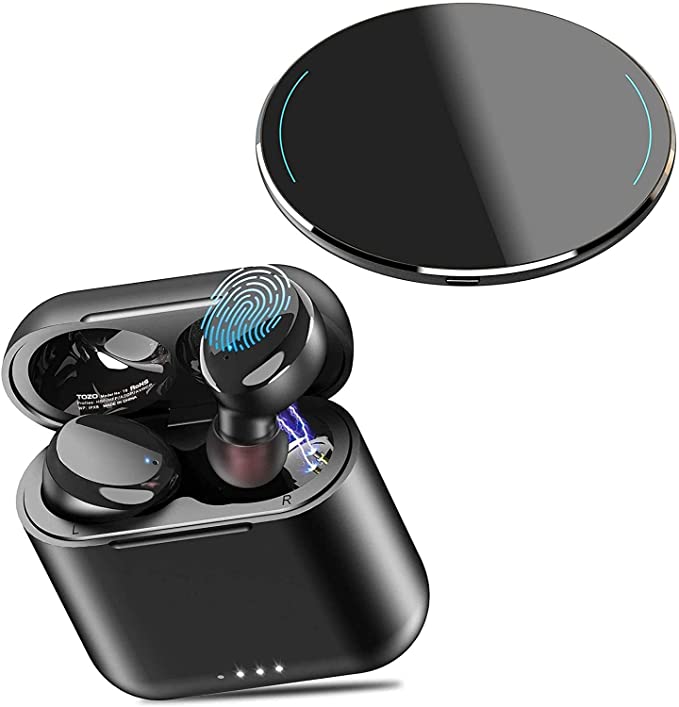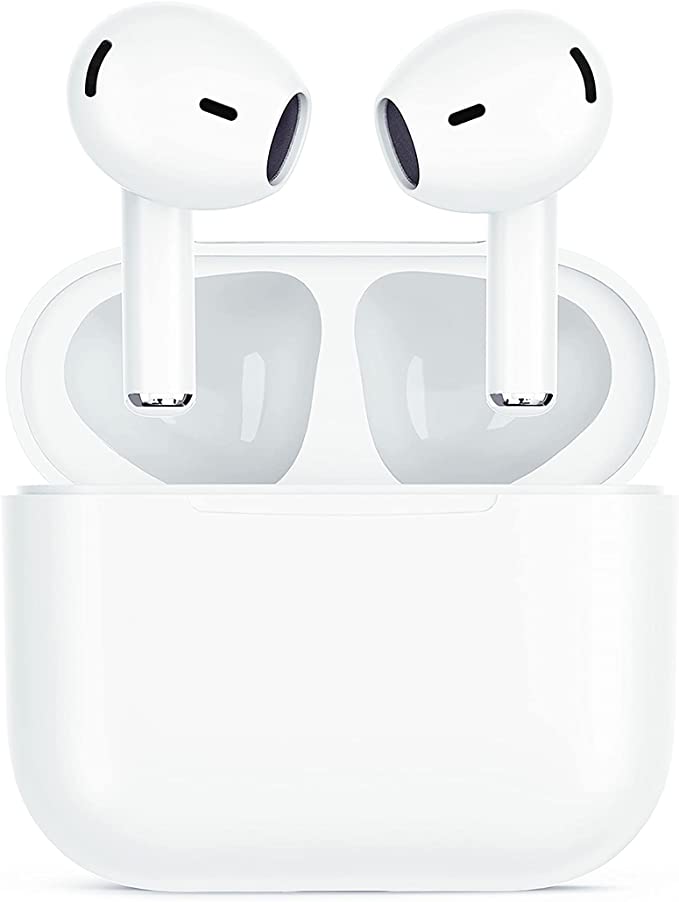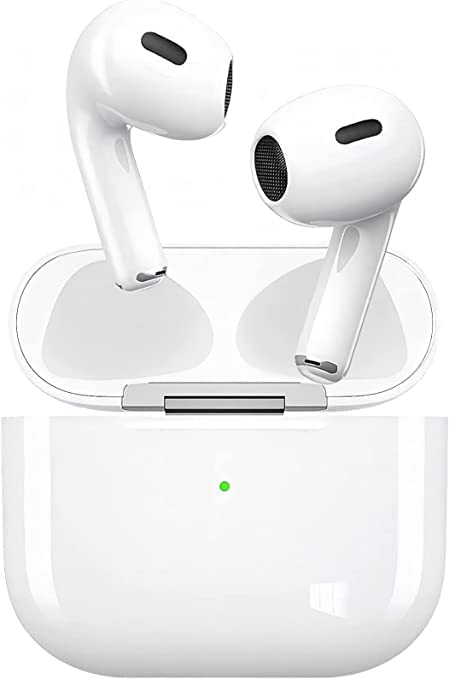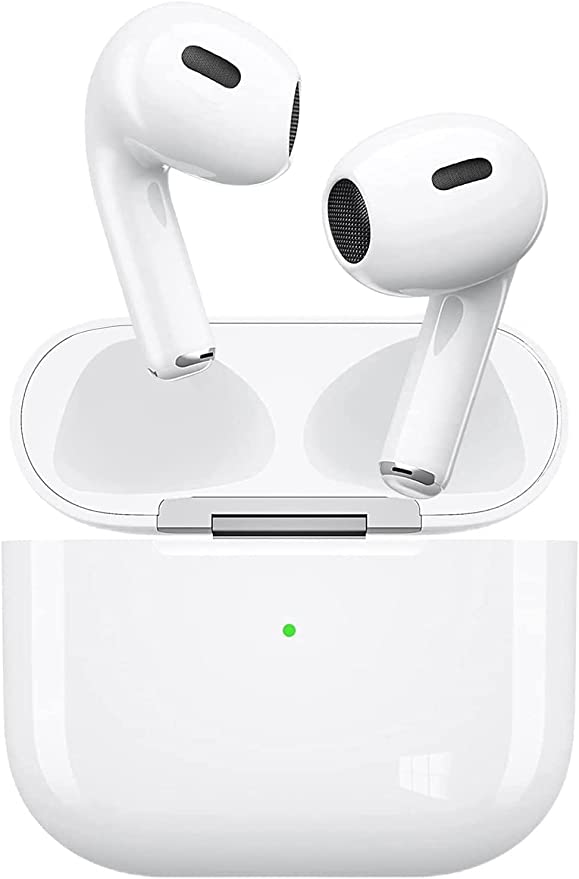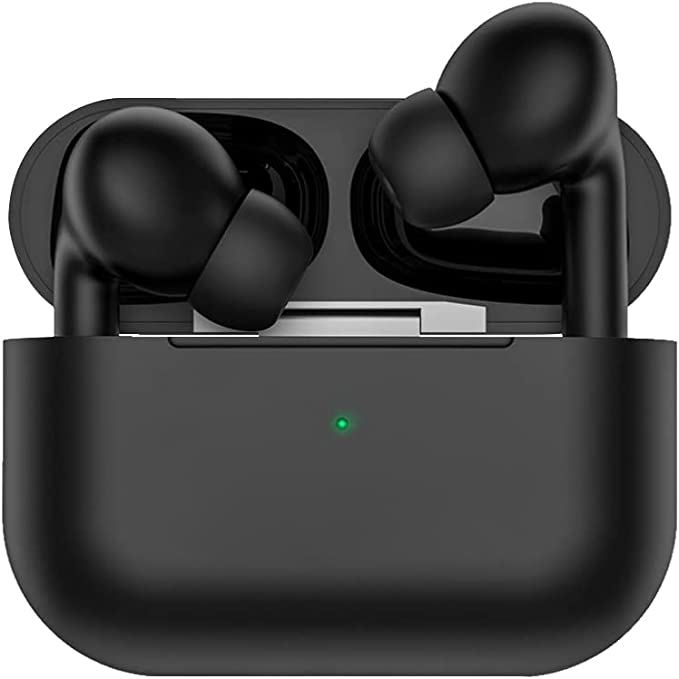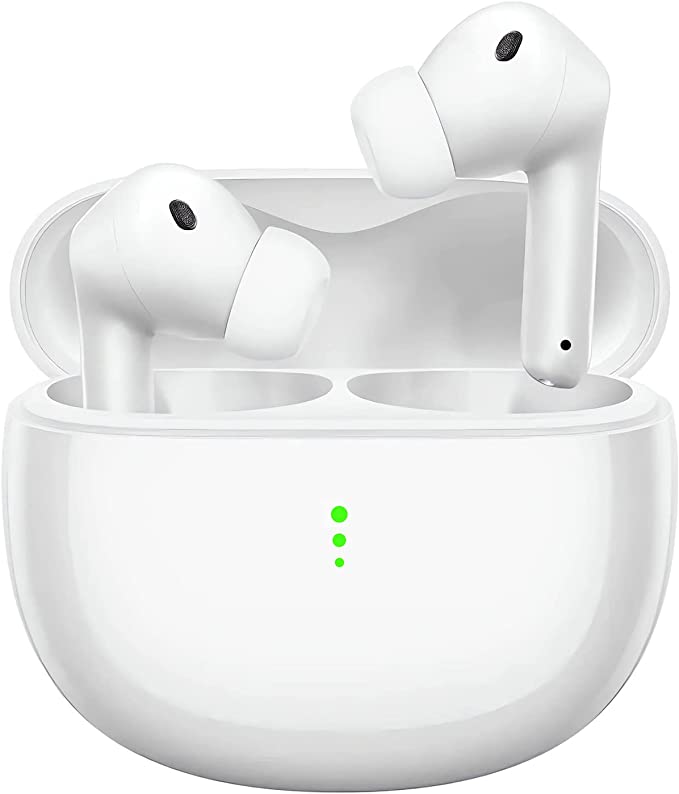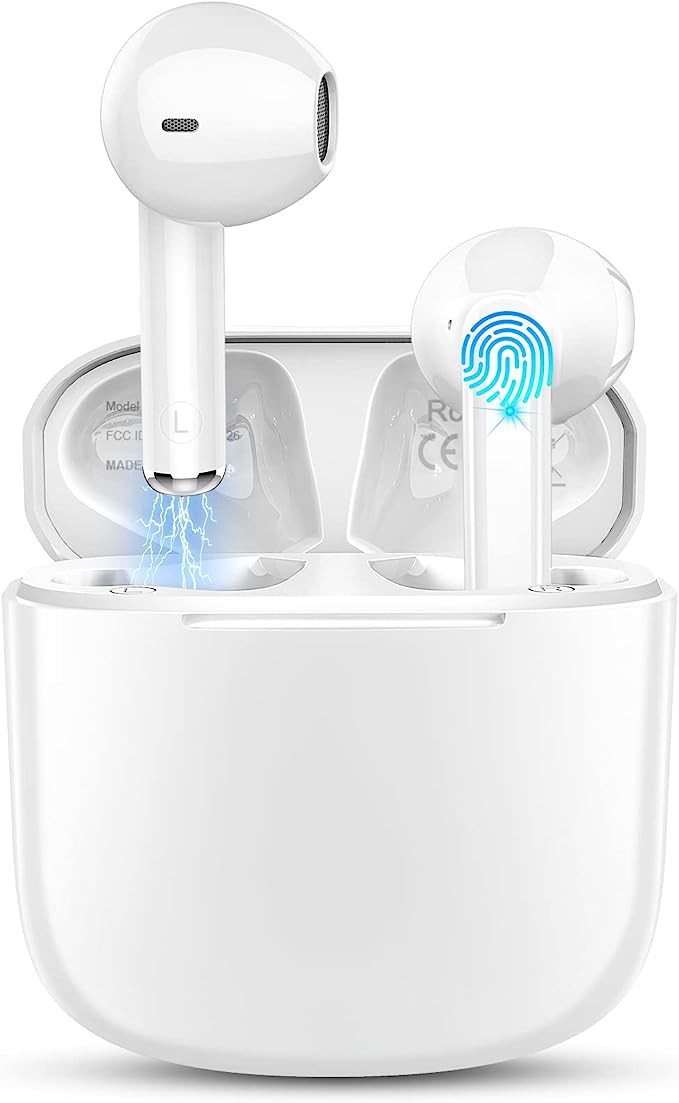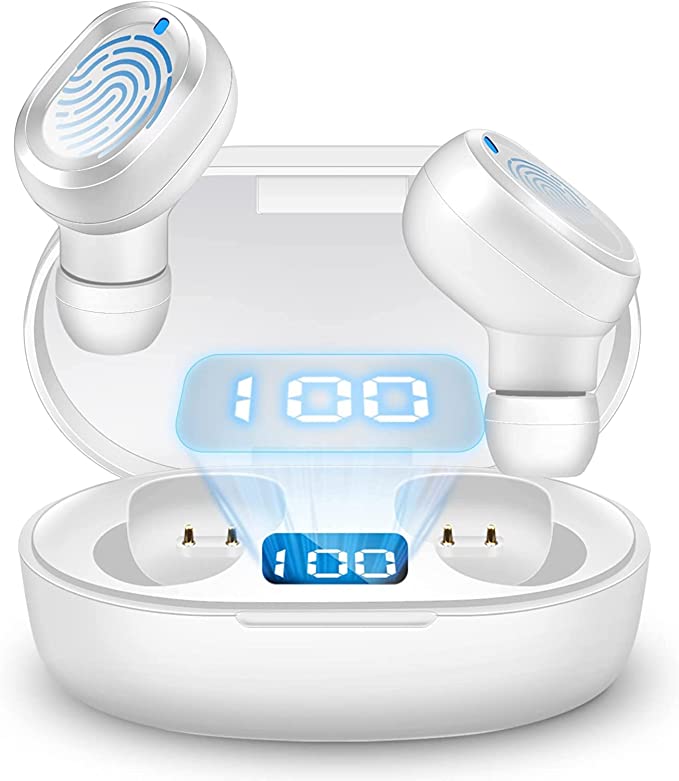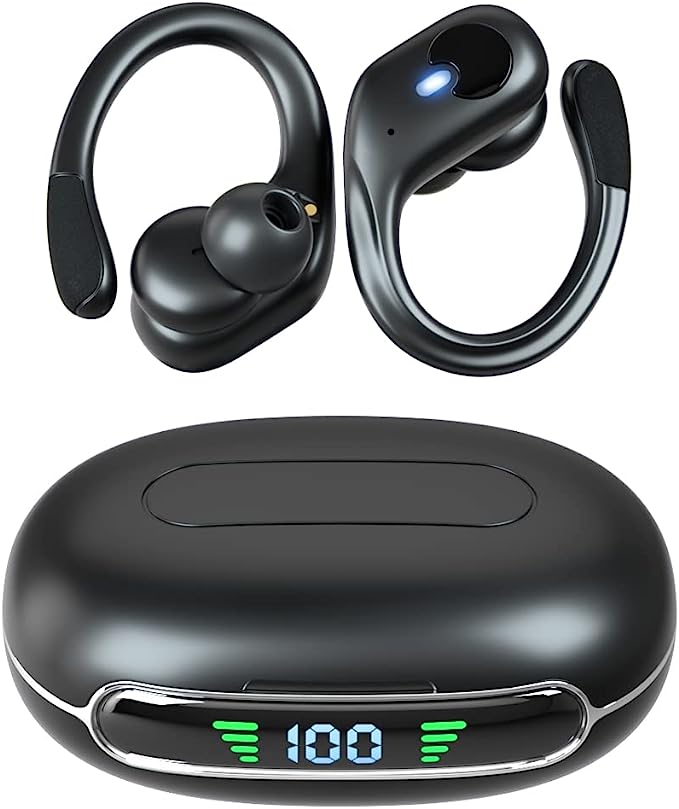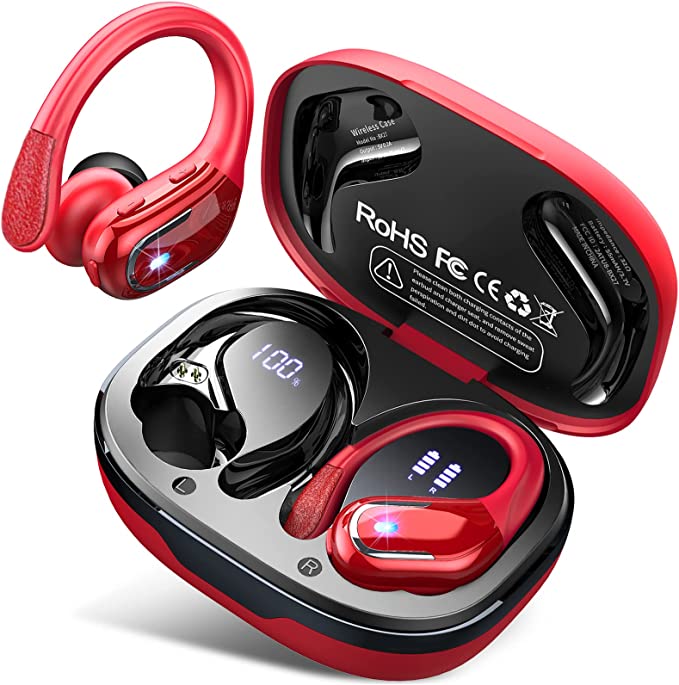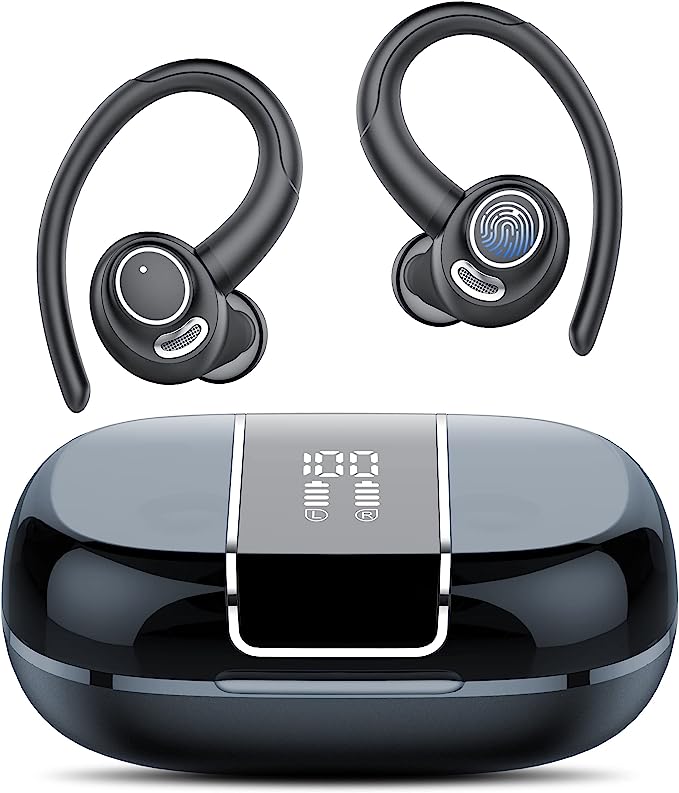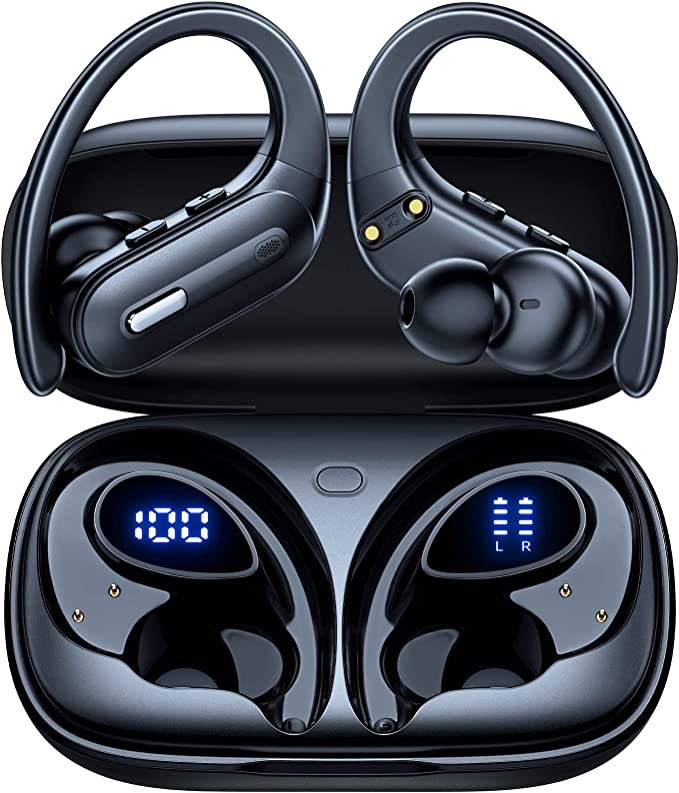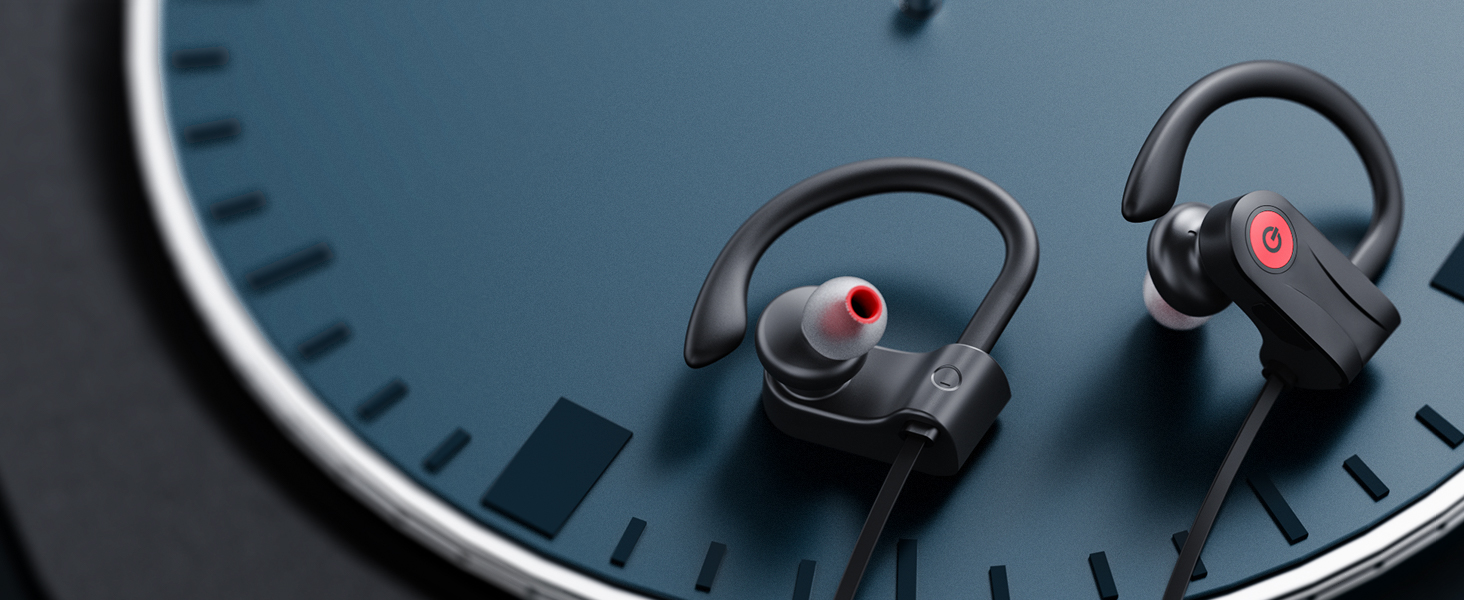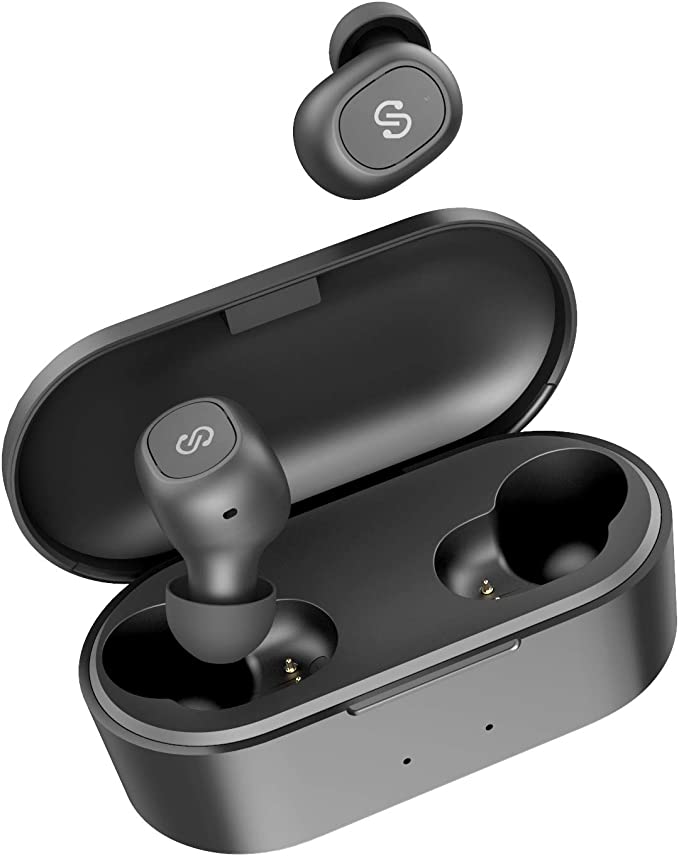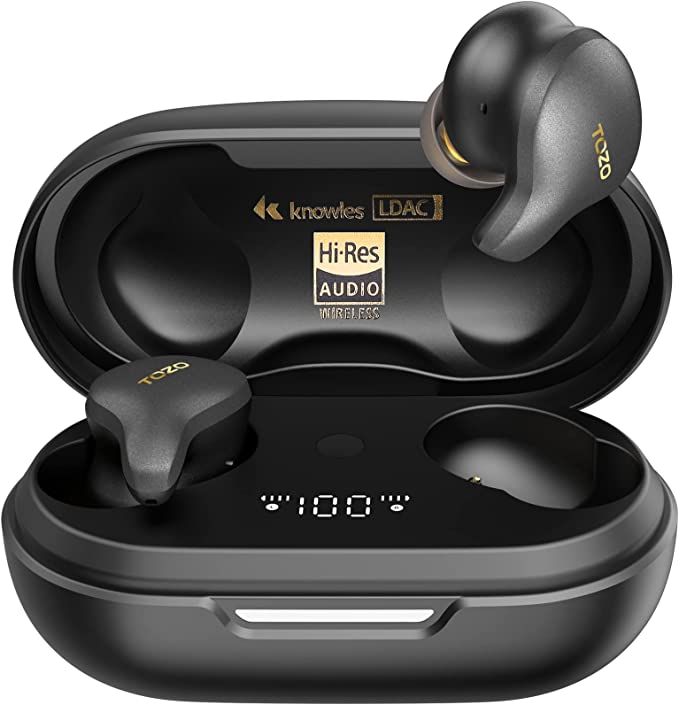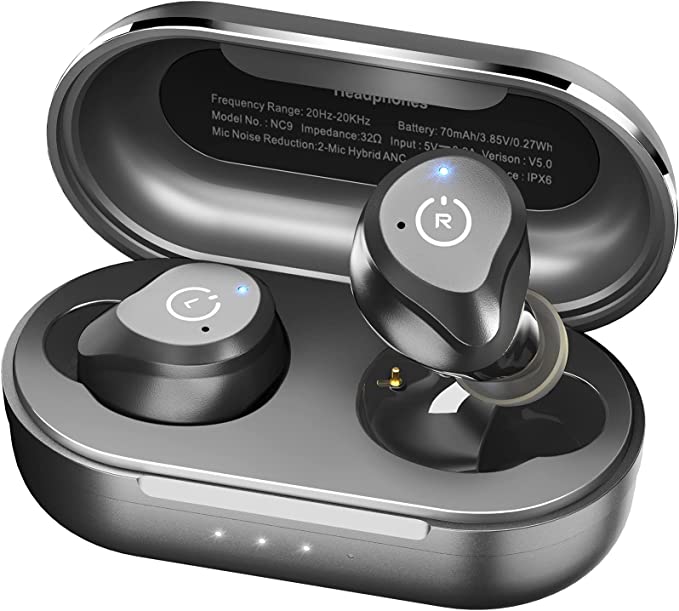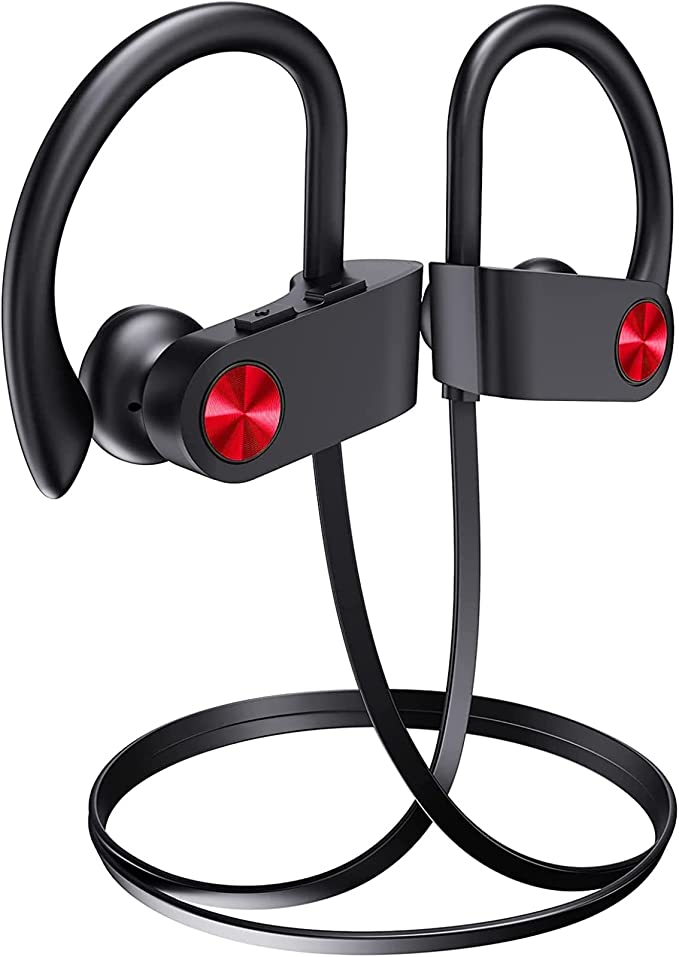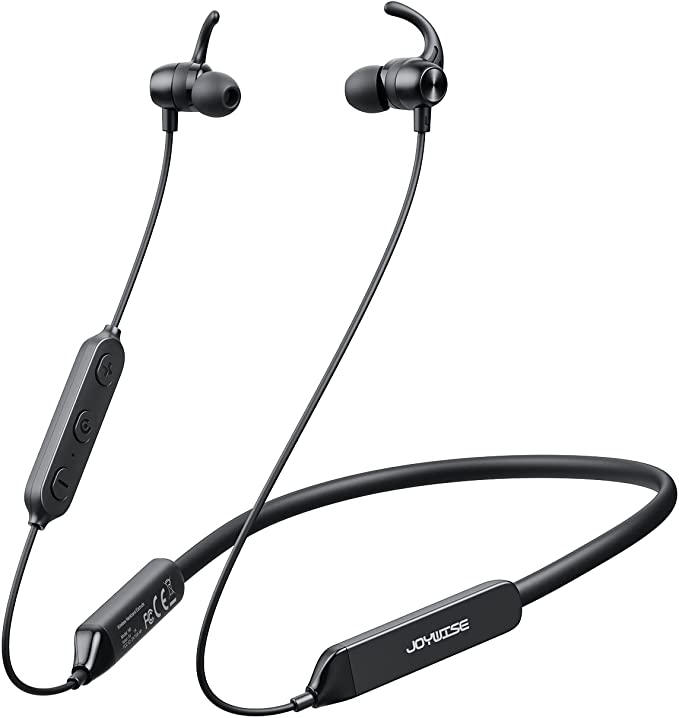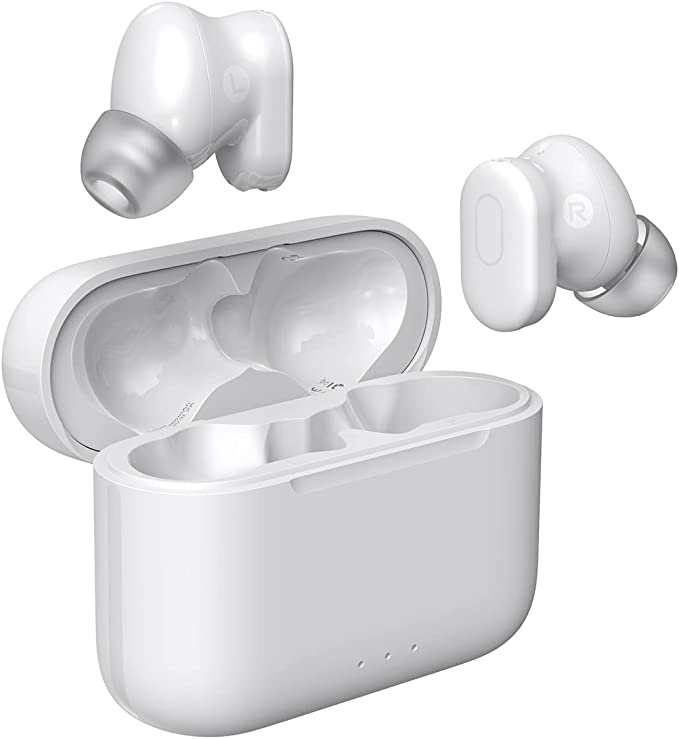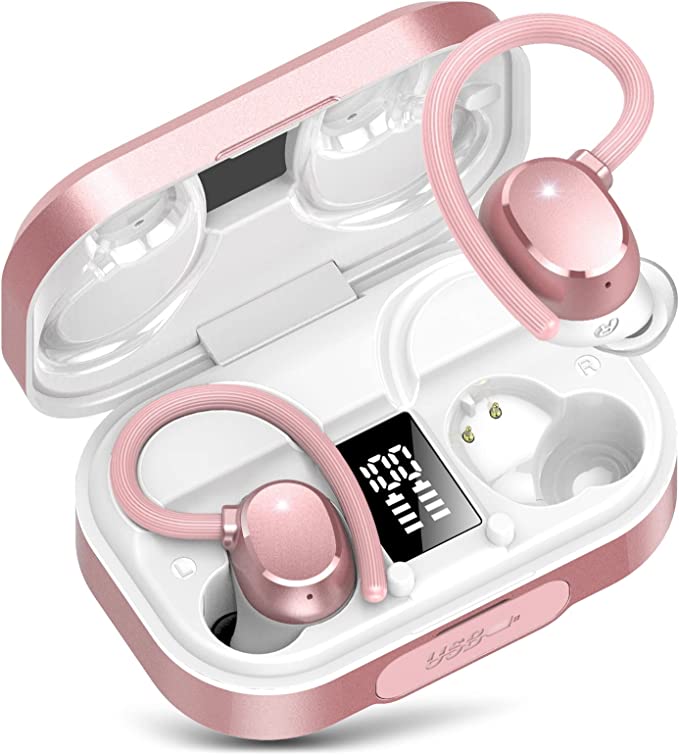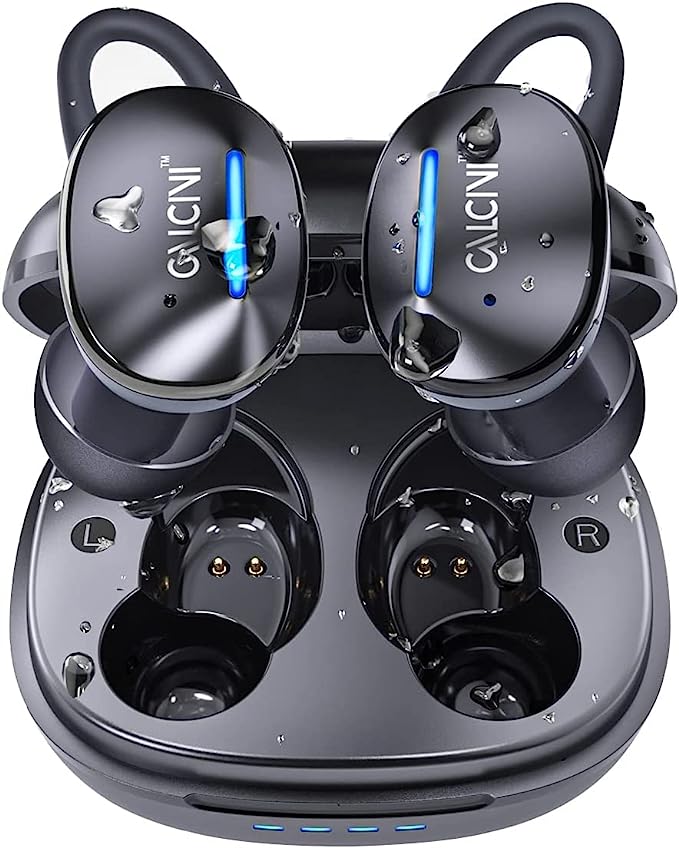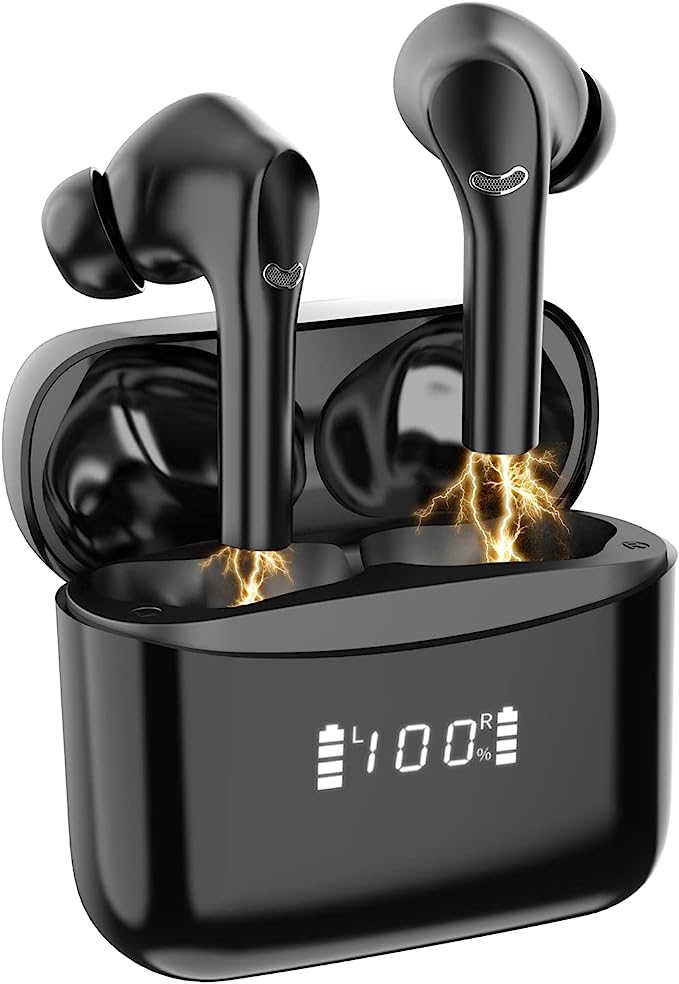TOZO T9S True Wireless Earbuds: A Feature-packed Yet Budget-friendly Option
Update on May 29, 2025, 6:53 p.m.
In the ever-accelerating symphony of our connected lives, our personal audio gear has transformed from a simple accessory into an essential conduit. We rely on these tiny companions for a focused work bubble amidst chaos, for the energizing beat during a workout, for a clear voice cutting through the city’s hum, and for those precious moments of unwinding with a podcast or favorite album. The advent of True Wireless Stereo (TWS) earbuds undeniably revolutionized this personal soundscape, snipping the last cords of inconvenience. But as the market floods with options, a crucial question emerges: can an affordable pair of earbuds truly deliver a reliable, enjoyable, and dare we say, scientifically sound experience?
It’s a challenge that engineers tackle daily. Today, we’re going to peek under the hood of one such contender, the TOZO T9S True Wireless Earbuds. Forget the marketing hype for a moment. Let’s embark on a friendly exploration, as if we’re chatting over coffee, to understand the science and thoughtful engineering that TOZO claims to have packed into these accessible buds. How do they aim to keep you seamlessly connected, ensure your voice is heard, survive your daily grind, and make your music sing? The answers lie in a fascinating interplay of physics, electronics, and clever design.

The Unbreakable Thread – Decoding Bluetooth 5.3 and the Quest for Seamless Connection
There’s little more frustrating in our wireless world than a stuttering song or a call that drops at a crucial moment. This is where the unsung hero of your earbuds, Bluetooth technology, steps into the spotlight. The TOZO T9S earbuds come equipped with Bluetooth 5.3, and that “.3” isn’t just a minor update; it signifies a meaningful evolution in how these tiny devices talk to your phone or laptop.
Think of Bluetooth as a highly choreographed, yet invisible, radio dance. Your phone and earbuds are partners, needing to communicate swiftly and clearly in an increasingly crowded “radio ballroom” filled with Wi-Fi signals, microwaves, and other Bluetooth devices. Older Bluetooth versions sometimes felt like clumsy dancers, occasionally bumping into others or losing their rhythm. Bluetooth 5.3, however, is a more experienced dance coordinator. It’s smarter at channel classification, meaning it can more adeptly identify and sidestep congested radio frequencies, much like finding a quieter spot on the dance floor. It also features enhancements in how devices “advertise” their availability and establish connections (like more efficient “handshakes” through features related to periodic advertising), leading to quicker pairing and more robust links. The T9S supports essential Bluetooth profiles like HSP (Headset Profile) for basic headset functions, HFP (Hands-Free Profile) for call control, A2DP (Advanced Audio Distribution Profile) for streaming that rich stereo music, and AVRCP (Audio/Video Remote Control Profile) so you can manage playback without reaching for your device.
Then there’s latency – the ghost in the audio machine. It’s that tiny, maddening delay between seeing lips move on a video and hearing the words, or the lag between an in-game explosion and its sound effect. Bluetooth 5.3 brings improvements aimed at reducing this delay, making for a more synchronized and immersive experience whether you’re binging a series or battling virtual foes. The overall efficiency gains in Bluetooth 5.3 also play a part in conserving battery life, as less energy is wasted on retransmitting lost data packets or maintaining a struggling connection. For you, the user, this translates to what TOZO describes as a “more stable connection” and a “low-latency listening experience” – an uninterrupted flow of audio that just works.
A little byte of history: Ever wonder about the name “Bluetooth”? It’s a nod to Harald Bluetooth, a 10th-century Danish king famed for uniting disparate Danish tribes. Similarly, Bluetooth technology was envisioned to unite different communication protocols and devices. Cool, right?

“Can You Hear Me NOW?” – The Art and Science of Four Mics and Environmental Noise Cancellation (ENC)
“Sorry, I’m in a noisy place, can you hear me?” We’ve all been there. Whether it’s the clatter of a coffee shop, the rumble of public transport, or just windy conditions, background noise is the nemesis of clear phone calls. The TOZO T9S tackles this challenge with a four-microphone array and Environmental Noise Cancellation (ENC) technology.
Now, it’s important to distinguish this from Active Noise Cancellation (ANC). While ANC is designed to create a quiet bubble for your listening by actively countering external sounds, the ENC in the T9S (and many similar earbuds) is primarily focused on making your voice clearer to the person on the other end of the call. How does this quartet of microphones perform this auditory magic?
Imagine sound as a collection of waves. Your voice creates one set of waves, while the café chatter, traffic, or wind create others. The four microphones on the T9S act like a team of highly sensitive sound detectives. By having multiple “ears” positioned strategically, the earbuds can capture sound from different angles. This is where beamforming principles often come into play. Think of it like the microphones creating a “spotlight” that hones in on the sound waves originating from your mouth, while dimming the “light” on sounds coming from other directions.
But just capturing sound isn’t enough. The real “brains” of the operation lie in sophisticated digital signal processing (DSP) algorithms. These algorithms are trained to recognize the characteristic patterns and frequencies of human speech and differentiate them from the more random or steady patterns of environmental noise. Once identified, the unwanted noise is suppressed or filtered out before your voice is transmitted. TOZO claims these earbuds “deliver up to 3 times clearer calls than other truly wireless earbuds.” While “3 times” is a marketing claim, the underlying science of multi-microphone arrays and targeted noise filtering genuinely aims to elevate your call clarity significantly, making those important conversations much less of a struggle. Some user experiences, as noted in general product feedback for similar technologies, do reflect noticeably clearer calls in moderately noisy environments, though extreme conditions can still pose a challenge for any ENC system.
Did You Know? While ENC focuses on your outgoing voice, ANC (Active Noise Cancellation) uses microphones to listen to the noise around you, then generates an “anti-noise” sound wave that’s 180 degrees out of phase with the incoming noise, effectively cancelling it out before it reaches your eardrum. They solve different problems!

Braving the Elements (and Your Workout) – The IPX7 Waterproofing Shield
Life happens. Sometimes it’s an unexpected downpour on your commute, other times it’s the well-earned sweat from an intense workout. For your everyday tech companions, durability isn’t just a bonus; it’s a necessity. The TOZO T9S earbuds come with an IPX7 waterproof rating, which sounds reassuring, but what does it scientifically mean for you?
Let’s decode “IPX7.” “IP” stands for Ingress Protection, and it’s an international standard (IEC 60529) that classifies the degree of protection provided by enclosures of electrical equipment against the intrusion of solid objects (like dust) and liquids. The first digit after “IP” relates to solid particle protection. In “IPX7,” the ‘X’ simply means the product hasn’t been specifically rated for dust protection by this particular test (it might still be dust-resistant due to its construction, but it’s not certified for a specific dust-proof level like IP5X or IP6X).
The crucial number here is the ‘7’, which signifies the level of liquid ingress protection. An IPX7 rating means the TOZO T9S earbuds are protected against the effects of temporary immersion in water under standardized conditions: up to 1 meter (about 3.3 feet) of freshwater for a maximum of 30 minutes. It’s vital to remember this is based on laboratory tests with still, fresh water.
How do these tiny earbuds achieve this water-tight fortress status? It’s a combination of meticulous physical design and material science. This includes:
1. Precision Seals: Tiny, often custom-shaped gaskets and seals are used around any openings, casing joins, and around the drivers themselves to create physical barriers against water entry.
2. Hydrophobic Nano-Coatings: As TOZO’s product description mentions, a “waterproof nano coating is adopted to resist splashes, rain, and sweat.” Imagine this as an invisible raincoat at a microscopic level. These coatings are engineered to have extremely low surface energy, causing water droplets to bead up and roll off rather than spreading out and seeping in. This hydrophobicity is key to repelling everyday moisture.
For you, the user, an IPX7 rating means peace of mind. You can confidently wear your TOZO T9S earbuds during a sweaty gym session, a run in light rain, or not panic if they’re accidentally splashed. It’s a shield against the common liquid hazards of an active life, significantly enhancing their longevity and reliability. Just remember, it’s not designed for swimming or prolonged submersion, and salt water or other liquids can be more corrosive than fresh water.
Real-World Scenario: You’re halfway through your morning jog, and the sky opens up with an unexpected shower. With IPX7-rated earbuds like the T9S, you can finish your run with your soundtrack intact, knowing they’re built to handle it.
The Heartbeat of Your Music – Exploring the 8.0mm Drivers and the Soul of Sound
Ultimately, earbuds live or die by the sound they produce. All the fancy features mean little if your music sounds muddy, tinny, or lifeless. The TOZO T9S earbuds house 8.0mm dynamic speaker drivers, which are the miniature engines responsible for turning electrical signals into the sound waves that delight your ears.
So, how is sound actually born in these tiny powerhouses? A dynamic driver, the most common type in earbuds, works like a traditional loudspeaker shrunk down. It has three main parts:
1. The Diaphragm: A thin, lightweight membrane that vibrates to create sound waves.
2. The Voice Coil: A coil of fine wire attached to the diaphragm.
3. The Magnet: A permanent magnet that creates a magnetic field around the voice coil.
When your phone sends an electrical audio signal to the earbuds, it flows through the voice coil. This creates a fluctuating electromagnetic field around the coil, which interacts with the field of the permanent magnet. This interaction causes the voice coil – and the attached diaphragm – to rapidly move back and forth. These vibrations push and pull the air, creating pressure waves that travel to your eardrum, which your brain then interprets as sound!
The “8.0mm” refers to the diameter of the diaphragm. Generally, a larger diaphragm can move more air, which can be beneficial for producing more impactful bass frequencies and a fuller sound. However, driver size isn’t the only factor determining audio quality. The material of the diaphragm (which needs to be light yet rigid), the strength of the magnet, the design of the voice coil, and, crucially, the acoustic tuning of the entire earbud enclosure play an enormous role. Tuning is an art and a science, involving shaping the frequency response to achieve a desired sound signature.
TOZO claims the T9S delivers “vivid clear treble” and “high bass balance,” aiming for a “3D immersive stereo surround sound.” While “3D surround sound” from stereo earbuds often involves psychoacoustic processing (tricks that fool your brain into perceiving a wider soundstage), a well-tuned 8.0mm driver can certainly lay the foundation for a detailed and engaging listening experience. The goal is to reproduce the different frequencies in your music – the deep rumble of a bass guitar, the warmth of a human voice, the crisp shimmer of cymbals – with accuracy and balance.
Analogy Time: Think of a speaker driver like a musical instrument. A larger drum (larger driver) might produce a deeper sound, but the skill of the drummer (the tuning and engineering) determines the quality, richness, and clarity of the music it ultimately produces.

The Little Things That Count – Ergonomics, Endurance, and Everyday Ease
Beyond the core technologies of connection, calls, waterproofing, and sound, the overall usability of true wireless earbuds hinges on a collection of “little things” that, together, make a big difference. The TOZO T9S addresses these through thoughtful design in ergonomics, battery endurance, and charging convenience.
Ergonomic Design – The Science of a Snug, Comfortable Fit:
An earbud that’s constantly falling out or causing discomfort after an hour is an earbud you won’t use. TOZO highlights an “Excellent Ergonomic Design,” stating the “surface shape of T9S perfectly fits the curve of inner contour of ear.” This isn’t just marketing fluff; good ergonomics are rooted in understanding human anatomy. The goal is to distribute pressure evenly within the ear’s concha, provide a secure anchor (often with the help of the ear’s natural curves like the antihelix and antitragus), and create a good acoustic seal with the ear canal. The T9S comes with six pairs of silicone eartips (XS/S/M/L/XL/XXL). This generous offering is scientifically important because ear canals vary dramatically in size and shape. Finding the right eartip size is crucial not only for comfort and stability (preventing them from falling out during a run) but also for optimal sound quality, particularly bass response, which relies on that good seal.
Long Endurance & Charging – Powering Your Day (and Night):
Battery anxiety is real, especially with devices we use constantly. The science of modern Lithium-ion (Li-ion) batteries has enabled the miniaturization and longevity we see in T9S earbuds. These batteries offer high energy density (more power in a smaller package) and a good number of charge cycles. The TOZO T9S claims up to 8 hours of listening time on a single charge from the earbuds themselves (importantly, this is rated at 50% volume; higher volumes will consume more power). The compact charging case then extends this up to a total of 24 hours of playtime before the case itself needs recharging.
When it comes to replenishing that power, convenience is key. The T9S case supports modern USB Type-C charging, which is becoming the universal standard for its reversibility and faster power delivery capabilities compared to older micro-USB. Furthermore, the case supports wireless charging. This typically uses the principle of electromagnetic induction: a coil in the wireless charging pad creates an alternating magnetic field, which induces a current in a corresponding coil inside the earbud case, charging its battery – like a “wireless handshake” transferring power. TOZO states the case can be fully charged in “less than 2 hours via wireless charger” (assuming a compatible charger, not included).
One-Step Pairing – Connection Without Complication:
The initial setup of a Bluetooth device can sometimes be fiddly. “One-Step Pairing,” as featured on the T9S, aims to streamline this. Typically, this means that once you take the earbuds out of their charging case (after the very first pairing with your device), they will automatically power on, connect to each other, and then quickly re-establish the connection with your last-paired phone or computer. This seamlessness is achieved through optimized Bluetooth chipsets and firmware that remember connection details and automate the handshake process.
For you, these “little things” add up to a much smoother and more pleasant daily experience: earbuds you can wear comfortably for hours, that last through your workday or long commute, charge up conveniently, and connect to your devices with minimal fuss.

The Affordable Alchemy – When Smart Science Delivers Everyday Excellence
The TOZO T9S True Wireless Earbuds, like many modern tech gadgets, are a miniature marvel of applied science and engineering. From the intricate dance of radio waves in Bluetooth 5.3 ensuring your music flows uninterrupted, to the sophisticated teamwork of four microphones and algorithms striving to lift your voice above the din; from the near-invisible nano-coatings молекулярно repelling water, to the precise vibrations of an 8.0mm driver bringing your favorite songs to life – it’s clear that even in an affordable package, a significant amount of scientific thought is at play.
Understanding a bit of this “unheard harmony” of technologies doesn’t just demystify the device in your ears. It empowers you as a consumer, allowing you to look beyond a list of features and appreciate the ingenuity involved. It also helps in setting realistic expectations – knowing, for instance, that “IPX7” is great for sweat but not for a swim, or that “8 hours battery” depends on your listening volume.
Ultimately, the TOZO T9S aims to be an example of “affordable alchemy” – where current, well-understood scientific principles and clever engineering are combined to transform common materials and components into a product that delivers an experience that, hopefully, feels more valuable than its price tag might suggest. Good technology, after all, isn’t solely defined by the highest specifications or the most groundbreaking innovations, but by how effectively and reliably it serves your needs in the silent, and not-so-silent, symphony of your everyday life. So, the next time you pop in your earbuds, take a moment to appreciate the invisible science that’s working hard to connect you to your world.
